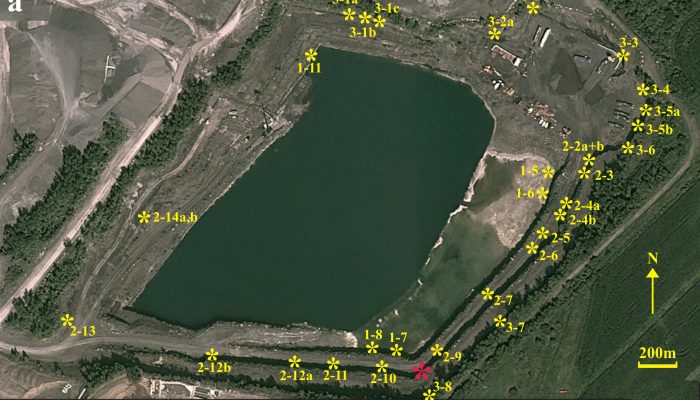
By Erin Mundy – a plain language summary of part of her Masters thesis
Groundwater is an important resource, with approximately 2 billion people around the world using groundwater everyday. Although most groundwater is beneath our feet, sometimes groundwater leaks out of stream-banks, hill sides and cliff faces – this is called groundwater seepage. Current scientific methods are not able to measure the amount of groundwater that leaks out of these landscapes. Scientists have used infrared cameras (cameras that show the heat of an objects) to identify groundwater seepage on hill-slopes and stream banks (Figure 1).
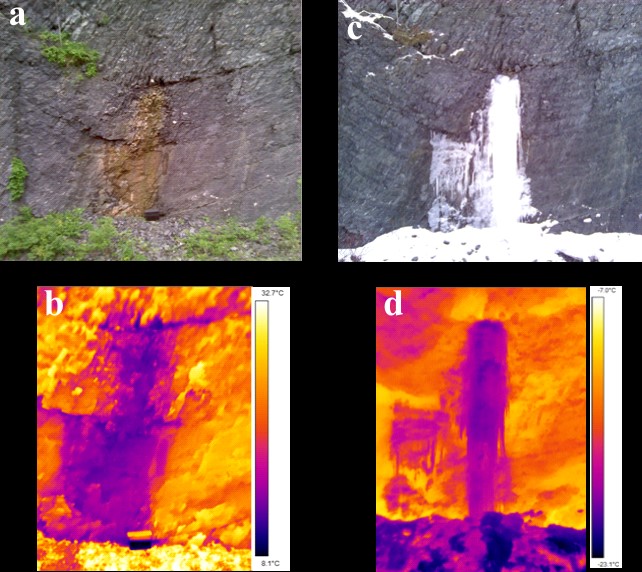
Figure 1. Digital image (a) and temperature image (b) of a seep in the summer and a digital image (c) and temperature image (d) of the same seep in the winter
This is because groundwater has an distinct heat signal, having a relatively constant temperature throughout the year (~10 degrees Celsius). Building on these studies, we hoped to find out the possibilities and limitations of using infrared cameras to measure the amount of groundwater that leaks out of the side of a cliff. We wanted to test if groundwater was flowing out of a cliff face slowly in the summer would warm up as it traveled down the rock, so the heat signature of the groundwater would go from cool water (that comes out of the rock, ~10 °C) to warmer water (warmed due to the sun and air temperature). On the other hand, we wondered if groundwater was flowing fast out of the cliff-face, it would not have time to warm, because the cool groundwater would be consistently running over it. In the winter, we believed the opposite would happen, that the groundwater would be warmer, relative to the surroundings, and show a cooling trend as the water traveled down the rock.
We found an unused mining pit in Saint Dominique, Quebec, that had lots of groundwater seeps coming out of the exposed rock, and used this as our test location. The mining pit had 3 different levels, as shown in Figure 2.
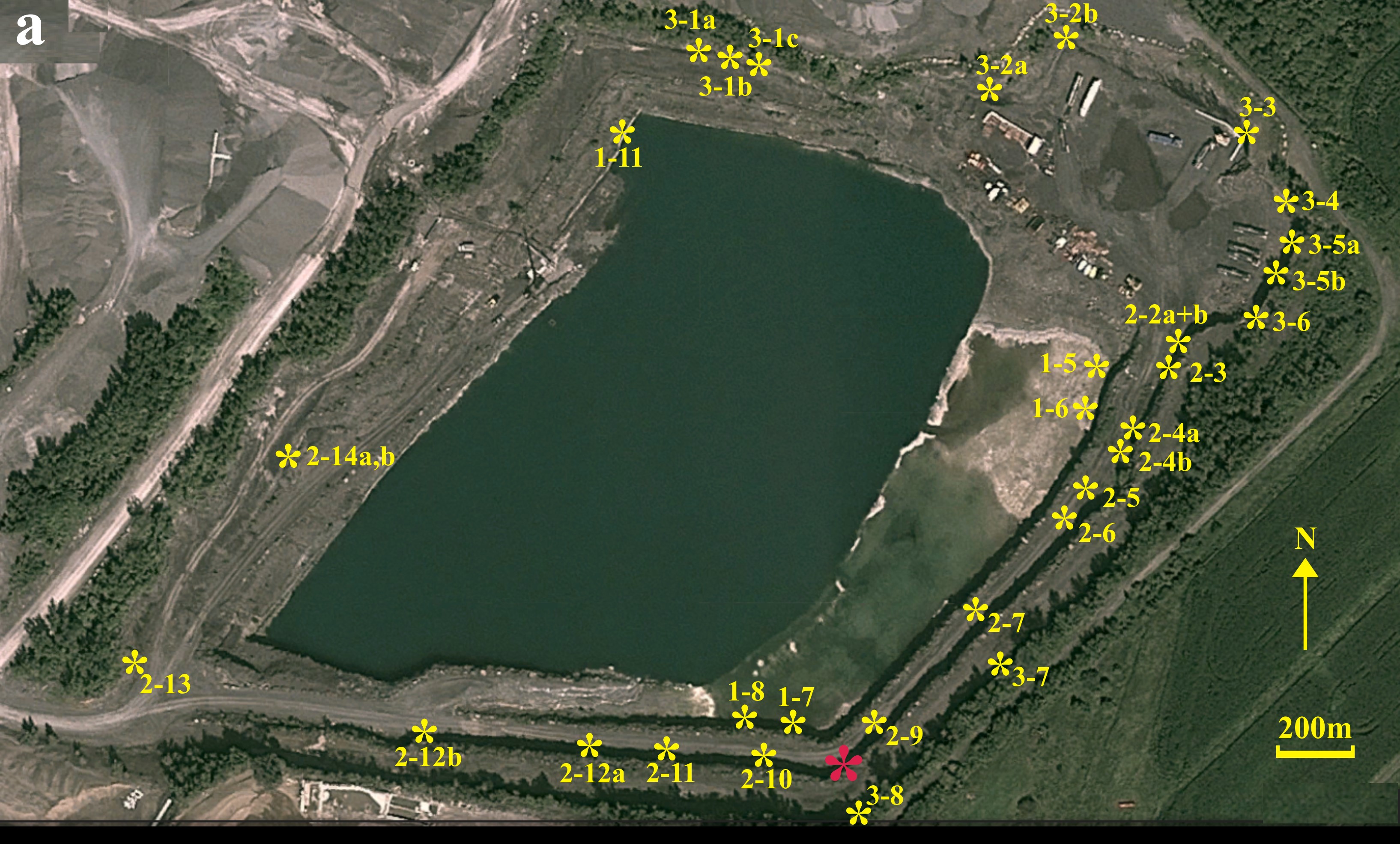
Figure 2: an aerial shot of the quarry with the seeps labeled.
We took infrared and optical photographs of the seeps during seven visits that spanned from January 2013 – October 2014. Three visits took place during the winter (January – February 2013), coinciding with periods of below freezing so that the effect of extreme cold on seeps could be analyzed. Four visits took place during the summer/fall (June – October 2014), coinciding with sunny and hot conditions, and cloudy and warm conditions in order to determine the effect warmer temperatures have on seepage. In addition to these visits, we also completed a 24-hour experiment, where we took infrared pictures of two seeps every half hour for 24-hours, to determine the effect of sunlight and changing air temperature on the seep temperature signature. We also created an “artificial seep” experiment, where we released water from two large tubs over the cliff at the pit for 8 hours; one tub had water released at a slow rate, while the other at a faster rate, to see if we could replicate the heat signals from the real seeps. We took pictures with the infrared camera every half hour for eight hours for that experiment. We analyzed the infrared photos from each visit using a computer software that allowed us to determine the temperature along the seep.
In the winter, groundwater flows out the rock at warmer temperatures than it’s surroundings, making it easily distinguishable. We found that there was a clear relationship between seeps with active groundwater flow and areas of ice growth on the following visit. So, in the winter, if you use an infrared camera to locate where groundwater is flowing on the side of a cliff, you can assume there is a good chance that ice will eventually form at these spots. However, the groundwater did not cool along the rock face, as we had expected it would. This suggests frozen seeps are complex and it is unlikely that temperature pictures can determine the rate of flow of groundwater seeps in the winter.
In the summer, we found that lower flowing seeps did warm up as the water traveled down the rock face, as compared to faster flowing seeps, which did not show as much warming. However, in the 24-hour experiment (where we took infrared pictures every half hour for 24 hours of two seeps), we found that the temperature signature of the seeps changed throughout the day. During the day, there was much more warming of the groundwater as it traveled down the cliff, whereas at night it did not warm as much. This is most likely due to the presence of sunlight and warmer air temperature during the day, which warms the water more as it is traveling down the rock.
In the “artificial seep” experiment, we found that the “seeps” showed more warming than the real seeps. This is probably because we only ran the experiment for 8 hours, so it did not have time to mimic the conditions of real seeps. Also, we noticed that instead of flowing down the rock face, some of the water was actually seeping into the rock, along the breaks in the rock. This may be another reason why the seeps showed more warming, as not enough water was flowing down the rock (instead it was flowing into it).
After completing these experiments, we have concluded several possibilities and limitations for infrared pictures of groundwater seeps.
Possibilities:
- Locate groundwater seeps in all seasons
- Locate groundwater seeps in winter and from this, areas of ice growth can be predicted
- Distinguish between lower flowing seeps and higher flowing seeps in summer (lower flowing seeps have more warming as the water travels down the rock face, higher flowing seeps do not have as much warming)
Limitations:
- Need to have a large difference in temperature between the air and groundwater to notice seeps. During the third winter visit, only one seep was identified to be flowing by the infrared camera. However, visual observations showed that eight seeps had groundwater flowing. This is because the temperature of the groundwater was too similar to the temperature of the air, making it not possible to detect the groundwater flow.
- Groundwater seeps in the winter are complex and do not show a cooling trend, therefore it is unlikely that temperature pictures can determine the rate of flow of groundwater seeps in the winter
- Breaks in the rock affect the flow of seeps, redirecting the flow, making it hard for temperature pictures to accurately determine flow
- Sunlight and air temperature affect the “warming” and “cooling” of the groundwater flow, with more warming present during the day and less at night. Focus needs to be on determining the optimal time to use infrared pictures to show the “warming” (or “cooling”) trend.
- The infrared camera itself has limitations. To use some functions of the camera, you have to correct your data for certain factors (like angle of the camera, humidity, etc.). If you don’t, you won’t be showing accurate data. This limits the amount of things you can do with the infrared camera and must be taken into account in order to ensure the pictures you captured are correct.
Despite the large number of limitations, infrared pictures is effective at locating groundwater seeps in all seasons, and able to distinguish between lower flowing seeps and higher flowing seeps (in the summer), which makes this technique a valuable, non-invasive way to study groundwater seepage. Future work should look at determining the optimal time to capture infrared pictures of seeps to determine a relationship between groundwater flow and temperature signatures.

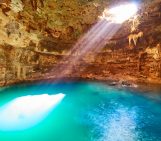
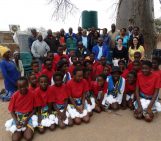

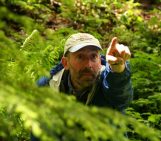
Mark Cuthbert
Cool study! Depending on the temperature resolution of your infrared equipment (?) I wonder whether you might get evaporative cooling effects too under certain conditions like we’ve recently recorded in caves (http://www.nature.com/articles/srep05162)? I guess for your sort of seeps it would only be apparent in slow flowing seeps under cloudy-windy summer conditions so may not be very important – just a thought…
california groundwater modeling
Groundwater modeling is the best solution for several types of civil engineering and water resource planning problems. A ground water modeling are based on groundwater flow equation.
john Brown
Enjoyed this post. I have not handled the thermal imaging camera, but I have seen the ultimate use of thermal imaging services, the hidden leakages was identified so easily. So I think this infrared thermography is an excellent way to find groundwater leakages also. Thanks for sharing this information.